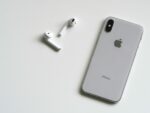As we got to the end of the 1980s, IBM was all but dead. It was on death watch, and it actually had gone from having one of the most powerful brands to one of the least powerful ones. It went from the tagline of “No one has ever lost their job buying from IBM” to “Buy from IBM and lose your job.”
Apple was in even worse shape a decade later, and we were counting the weeks to when that company would have to shut its doors forever. Chrysler has had several near-death experiences, but now it is (granted, as part of Fiat) a company to be reckoned with. And AT&T literally came back from the dead to once again become dominant in the U.S. Companies that were once great can return; they just need to find a way back to greatness. Let’s explore how some of these companies recovered to see if we can find a way back for BlackBerry.
IBM: Who wants to live forever?
IBM does. In fact, of all the companies we’ll talk about, only IBM was designed at the start to be immortal—and they almost died despite that. Their problem was that they executed a lock-in strategy incredibly well, then concluded that, since customers couldn’t switch, they would pay whatever IBM charged for whatever IBM wanted to sell. Toward the end IBM, was charging a lot for what was basically bug fixes for unreliable products, and folks found a way to move.
Louis Gerstner and Jerry York cut IBM to the bone, got rid of underperforming units, refocused on the customer, and created the strongest marketing team ever built for technology. They then put marketing ahead of development, telling stories about products that didn’t exist yet as if they not only existed but were market-leading.
The first wave IBM dominated was e-commerce, and they owned the mindshare for this segment long before they had a solution that was actually competitive in it. They fixed the perception first, then they fixed the company.
#!
Apple: Creating magic from mulch
When Steve Jobs took over Apple, he had been outspoken that he wouldn’t touch Apple’s products at the time with a 10-foot pole and rubber gloves. He was embarrassed about how bad they were. Apple had drifted away from the amazing company he had helped create to one that appeared to be chasing companies like Dell, IBM and HP—and doing a horrid job of it. They didn’t have a negative brand image like IBM, but after the launch of Windows 95, they didn’t seem to have much of a reason for existing either.
But once Steve Jobs took over the company, he put a massive amount of effort into fixing Apple’s image first. Initially he got a US$100 million cash infusion from Microsoft, which served as a vote of confidence to other investors, increasing the cash available to the company and giving him a war chest—much of which went to marketing and the hunt for something no one else had.
With marketing, he presented Apple’s lame products as something special, and he maintained sales until he could get them redesigned back into products he could be proud of. Eventually he found the iPod, which he brought in from the outside to drive the recovery. But if he hadn’t stabilized sales first, he never would have gotten to the iPod, which had a massive marketing campaign associated with it and a tight focus on user experience, a formula that followed into the iPhone and iPad.
Wrapping up: BlackBerry
There is no doubt BlackBerry is spending a ton on marketing, but they aren’t leading a parade like IBM did with e-commerce, nor have they found an iPod product like Apple did. They are still largely chasing the iPhone and Android products, but with a unique business focus that isn’t resonating at the moment. They have advantages through QNX-to-Automotive connectivity, and they could anticipate wearable technology or some other market move to create the next iPod-like product.
In the end, BlackBerry’s success likely lies not in them trying to be a good follower, but in creating a new offering, and then, like Apple and IBM, driving the market to them as the leader of that unique segment/market.
In the end, that is how the BlackBerry came to market in the first place. It was never a “me too” product; it was the “it” product, and to succeed, the firm has to create another one.
Rob Enderle is a principal analyst at the Enderle Group.






